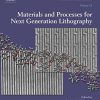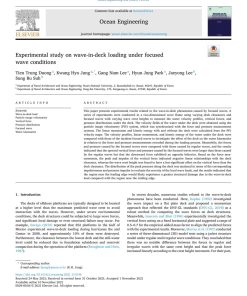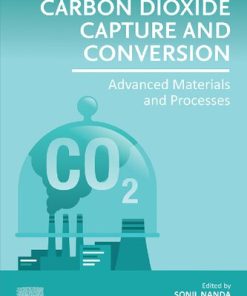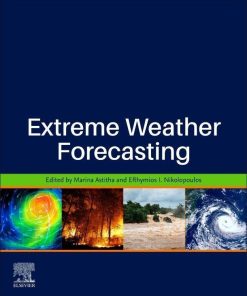(EBOOK PDF)Materials Under Extreme Conditions Recent Trends and Future Prospects 1st edition by Tyagi 9780128013007 0128013001 full chapters
$50.00 Original price was: $50.00.$25.00Current price is: $25.00.
Materials Under Extreme Conditions Recent Trends and Future Prospects 1st edition by Tyagi – Ebook PDF Instant Download/Delivery:9780128013007, 0128013001
Full download Materials Under Extreme Conditions Recent Trends and Future Prospects 1st edition after payment
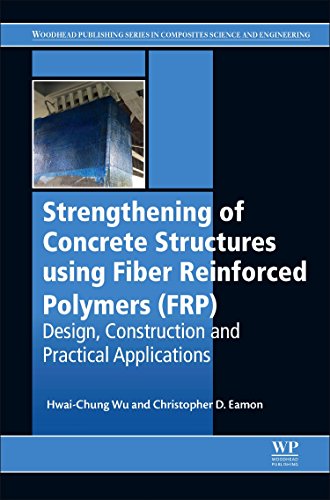
Product details:
• ISBN 10:0128013001
• ISBN 13:9780128013007
• Author:Tyagi
Materials Under Extreme Conditions: Recent Trends and Future Prospects analyzes the chemical transformation and decomposition of materials exposed to extreme conditions, such as high temperature, high pressure, hostile chemical environments, high radiation fields, high vacuum, high magnetic and electric fields, wear and abrasion related to chemical bonding, special crystallographic features, and microstructures. The materials covered in this work encompass oxides, non-oxides, alloys and intermetallics, glasses, and carbon-based materials. The book is written for researchers in academia and industry, and technologists in chemical engineering, materials chemistry, chemistry, and condensed matter physics.
Materials Under Extreme Conditions Recent Trends and Future Prospects 1st Table of contents:
Chapter 1. Material Studies at High Pressure
1. Introduction
2. Experimental and Theoretical Methods to Study Materials at High Pressure
3. Diagnostics
4. Some Case Studies
5. Future Prospects
Chapter 2. Materials Under Shock Waves
1. Introduction
2. Dynamic Compression Process
3. Experimental Techniques
4. Case Studies
5. Theoretical Methods
6. Theoretical Studies
7. Summary and Discussion
Chapter 3. Materials for Hostile Corrosive Environments
1. Introduction
2. Corrosion by Liquid Sodium
3. Materials for the Hostile Corrosive Environments in Steam Water Environments of Nuclear Power Plants
4. Materials in Seawater Environments
5. Corrosion Issues of Materials for Nitric Acid Corrosive Environments
6. Pyrochemical Reprocessing of Spent Metallic Fuel and Durability of Materials in Molten Salt and Uranium Environments
7. Conclusions
Chapter 4. Materials for Hostile Chemical Environments
1. Introduction
2. Different Types of Hostile Environments
3. Acid-Resistant Materials
4. Alkali-Resistant Materials
5. Materials Resistant to Corrosive Gases (H2S, SOx, NOx, etc.)
6. Methods to Monitor Surface Modifications Occurring With Materials Due to Hostile Environments
7. Stainless Steel in Hostile Chemical Environments
8. Different Types of Steels
9. Classification of Steel for Engineering Uses
10. Surface Roughness
11. Refractory Materials
12. Reaction of Refractory Materials With Slag
13. Pozzolans
14. Tungsten Carbide
15. Silicon Carbide
16. Boron Nitride
17. Gallium Nitride
18. Borosilicate Glass
19. Diamond-Based Materials
20. Resins and Polymers for Hostile Chemical Environments
21. Acrylic Resins
22. Epoxy Resins
23. Silicone Resins
24. Buna N
25. Ethylene Propylenediene Monomer Rubber
26. Fluorocarbon Elastomers
27. Styrene-Butadiene-Based Polymers
28. Plastics That Can Survive Hostile Environments
29. Designing Fibers of Polymers With Resistance to Hostile Chemical Environments
30. Chlorine and Fluorinated Polymers
31. Fluorinated Polymers or Fibers
32. Chemically Resistant Fibers Based on Aromatic Ring-Containing Polymers
33. Composite Materials
34. Conclusions
Chapter 5. High Performance Polymer Nanocomposites for Structural Applications
1. Introduction
2. Nanofillers
3. Polymers
4. Preparation of Polymer Nanocomposites
5. Characterization of Nanocomposites
6. Tailoring Morphology and Interface of Polymer Nanocomposites
7. High-Modulus Polymer Nanocomposites: Recent Developments
8. Conclusions
List of Acronyms and Abbreviations
Chapter 6. Glasses and Glass-Ceramics for Vacuum and High-Temperature Applications
1. Introduction
2. Glass and Glass-Ceramics and Related Properties
3. Wettability and Joining of Metals Using Glasses
4. Types of Seals and Their Configuration
5. Sealants for High Temperature (Solid Oxide Fuel Cell Sealants)
6. Preparation of Glass-to-Metal Seals
7. Machinable Glass-Ceramics
8. Future Perspectives
Chapter 7. Natural Glasses Under Extreme Conditions
1. Introduction
2. Glass
3. Natural Glasses of Volcanic Origin
4. Natural Glasses of Nonvolcanic Origin
5. Leaching of Glass
6. Alteration of Natural Glasses Under Extreme Geological Conditions
7. Alteration of Natural Glasses Under Extreme Experimental Conditions
8. Conclusions and Future Directions
Chapter 8. Protective Hard Coatings for Tribological Applications
1. Introduction
2. General Methods of Deposition
3. Characterization Tools
4. Testing Methods
5. Hard Coatings for Tribological Applications
6. Summary
Chapter 9. Intermetallics and Alloys for High Temperature Applications
1. Introduction
2. Intermetallics
3. Silicides
4. High-Entropy Alloys
5. Summary
Chapter 10. Synthesis and Characterization of Borides, Carbides, and Nitrides and Their Applications
1. Introduction
2. Phenomena
3. Theoretical Concepts
4. Synthesis
5. Characterization Techniques
6. Properties
7. Applications
8. Conclusions
Chapter 11. High-Temperature Ceramics
1. Introduction
2. Classification of Ceramics
3. Chemical Bonding
4. Phase Transitions
5. Phase Diagram
6. Preparation and Processing
7. Characterization
8. Properties of Refractory Ceramics
9. Examples of High-Temperature Ceramics and Their Applications
10. Conclusions
Chapter 12. Cold Plasma Processing of Materials for Extreme Conditions
1. Introduction
2. The Role of Plasma in Chemical Vapor Deposition
3. Plasma Sources for Chemical Vapor Deposition Applications
4. Plasma-Assisted Chemical Vapor Deposition
5. Conclusions
Chapter 13. Tailored Thermal Expansion Material for High-Temperature Applications
1. Introduction
2. Thermal Expansion of Materials: Some Fundamental Aspects
3. Experimental Techniques for Thermal Expansion Measurements
4. Correlation of the Thermal Expansion Coefficient With Other Physical Properties of Materials
5. Different Classes of Materials Based on Thermal Expansion Behaviors
6. Materials With Low or Negative Thermal Expansion Behavior
7. Tailoring of Thermal Expansion of Materials Based on Crystallographic Concepts
8. Thermal Expansion Behavior of Perovskite-Type Materials
9. Conclusion
Chapter 14. Materials Under Intense Laser Irradiation
1. High Energy Density State of Matter
2. X-Ray Emission from Laser-Produced Plasma
3. Particle Acceleration With Lasers
4. Shock Wave Propagation
5. Warm Dense Matter: an Exotic State
6. Applications
Chapter 15. Laser-Induced Vaporization–Mass Spectrometry Studies on Refractory Materials at Ultrahigh Temperatures
1. Introduction
2. Laser–Solid Interaction
3. Experimental Method
4. Results and Discussion
5. Conclusion
Chapter 16. Nanoclusters Under Extreme Ionization Conditions
1. Introduction to Clusters
2. Different Methods for Preparation of Clusters
3. Characterization of Cluster Source
4. Instrumentation
5. Clusters Under Extreme Ionization Conditions: Interaction With Lasers
6. Different Studies Related to Interaction of Laser With Clusters
7. Applications
Chapter 17. Materials Response Under Irradiation
1. Introduction
2. Irradiation – Processes Leading to Extreme Situations
3. Irradiation Using Different Incident Beams
4. Defect Dynamics in Materials Under Irradiation
5. Irradiation-Enhanced Diffusion
6. Irradiation-Induced Segregation
7. Radiation-Induced/Enhanced Phase Transformation
8. Influence of Radiation-induced Microstructure on Mechanical Properties
9. Multiscale Modeling to Predict Irradiation Behavior of Materials
10. Future Trends
11. Summary
Chapter 18. Radiation–Matter Interaction and Radiation-Tolerant Oxides
1. Introduction
2. Nuclear Fission
3. Typical Nuclear Reactors
4. Reactors and Radioactivity
5. Methods to Dispose Nuclear Waste and Material Requirements
6. Damage Caused by Radiation
7. The Rate/Duration of Radiation Damage
8. Methods to Evaluate Damage
9. Ion–Solid Interaction
10. Damage in Nuclear-Stopping Regime
11. Damage in Electronic-Stopping Regime: Track Formation
12. Models of Track Formation
13. Phase Transformations by SHI Irradiation
14. Ion Hammering and Texture Changes
15. Irradiation Effects in Some Representative Nuclear Materials
16. Conclusions
Chapter 19. Diamond-Based Radiation Detectors for Applications in Highly Corrosive Solutions and High-Radiation Fields
1. Introduction
2. Structure and Properties of Diamond
3. Diamond as a Host for Radiation Sensing
4. Laboratory Synthesis of Diamond
5. History of Diamond-Based Radiation Detectors
6. Performance of CVD Diamond α-Detectors
7. Factors Governing the Performance of CVD Diamond α-Detectors
8. Neutron Detection in Diamond
9. Challenges and Future Prospective in Diamond Radiation Detectors
10. Conclusions
Chapter 20. Severe Plastic Deformation of Materials
1. Introduction
2. Theory and Phenomena of Severe Plastic Deformation
3. Methods to Impart Severe Plastic Deformation
4. Characterization and Properties
5. Applications
6. Summary
Chapter 21. Materials in a High Magnetic Field
1. Introduction
2. Generation of High Magnetic Fields
3. Response of Materials in a Magnetic Field
4. Superconductors in Magnetic Field
5. Magnetoelastic Materials With Current Technological Interest
6. Future Outlook
Chapter 22. Properties of Materials Under High Electric Field
1. Introduction
2. Interaction of Matter With Electric and Electromagnetic Field
3. Dielectric Materials for High-Speed Electronic Circuits
4. Dielectrics Under Extreme Potential (Dielectric Breakdown)
5. Case Studies on High and Low Dielectric Constant Materials
6. Summary and Conclusions
People also search for Materials Under Extreme Conditions Recent Trends and Future Prospects 1st:
materials under extreme conditions
materials under extreme conditions recent trends and future prospects
high pressure and nano materials research under extreme conditions
what are the harmful material
what are the toughest materials
Tags:
Materials Under,Under Extreme Conditions,Tyagi
You may also like…
Politics & Philosophy - Politics
Computers & Technology
Terahertz Biomedical and Healthcare Technologies: Materials to Devices 1st Edition
Arts - History & Criticism
Uncategorized
Experimental study on wave-in-deck loading under focused wave conditions Tien Trung Duong
Uncategorized
Climatology
Computers - Artificial Intelligence (AI)


